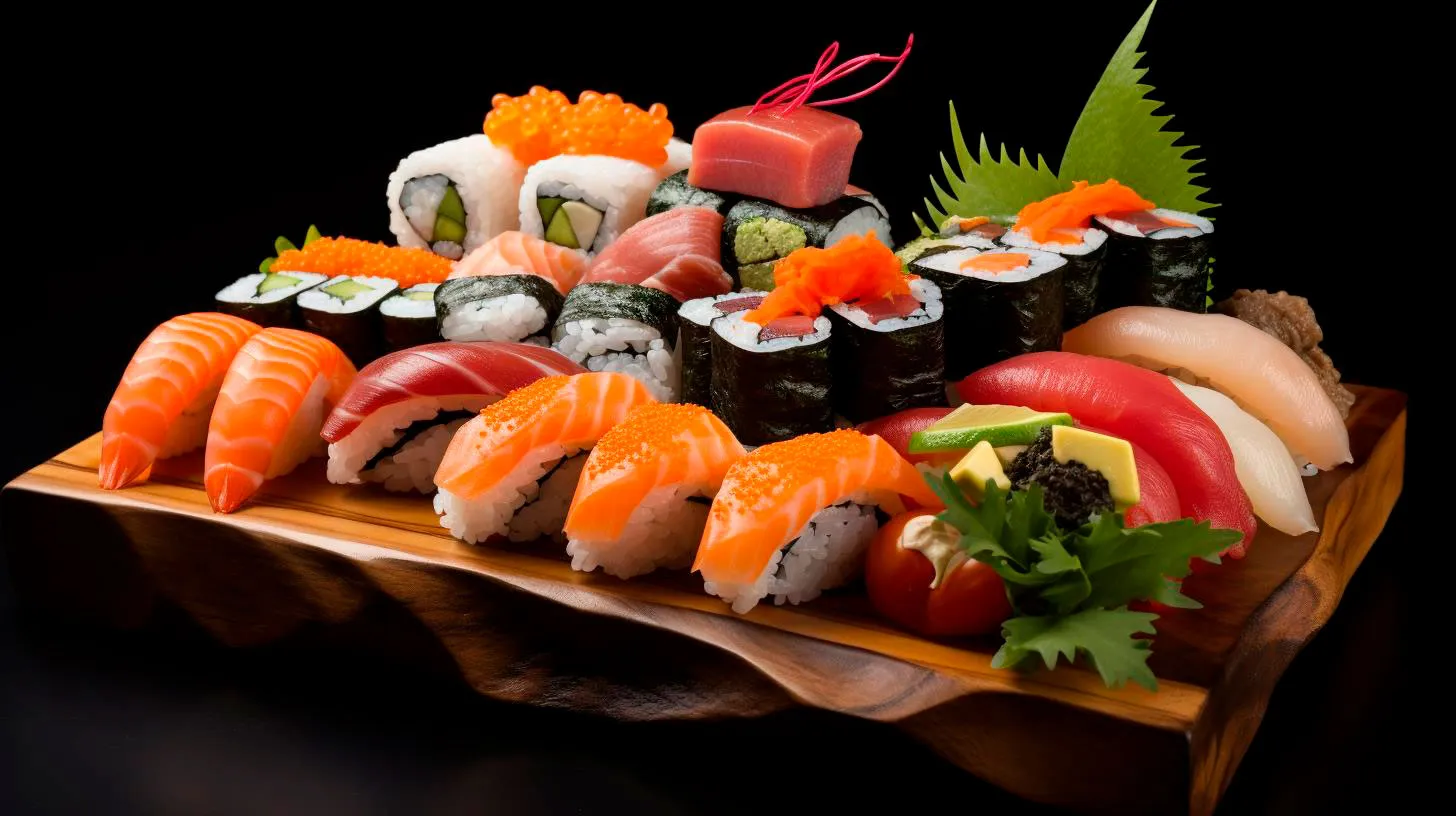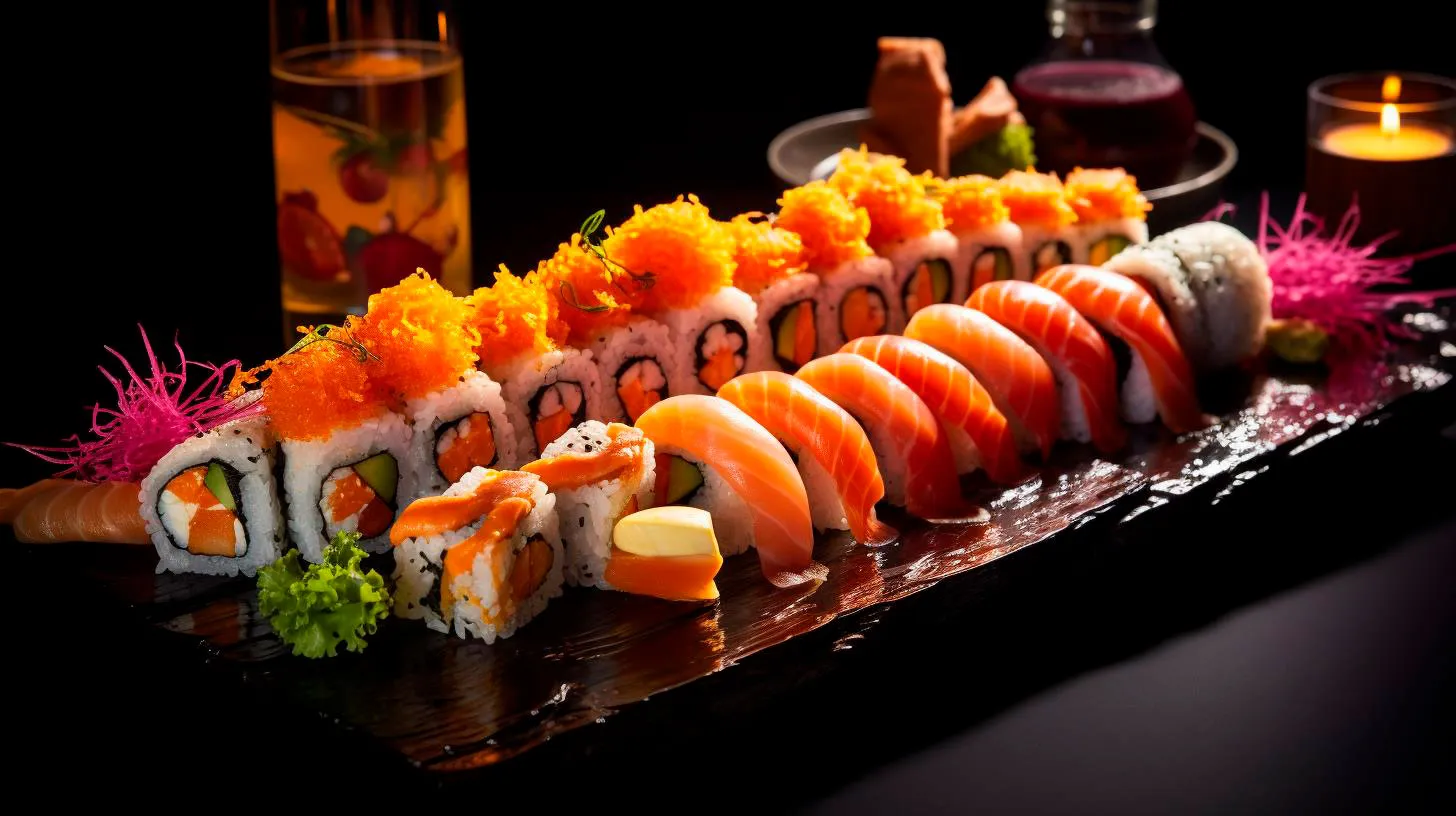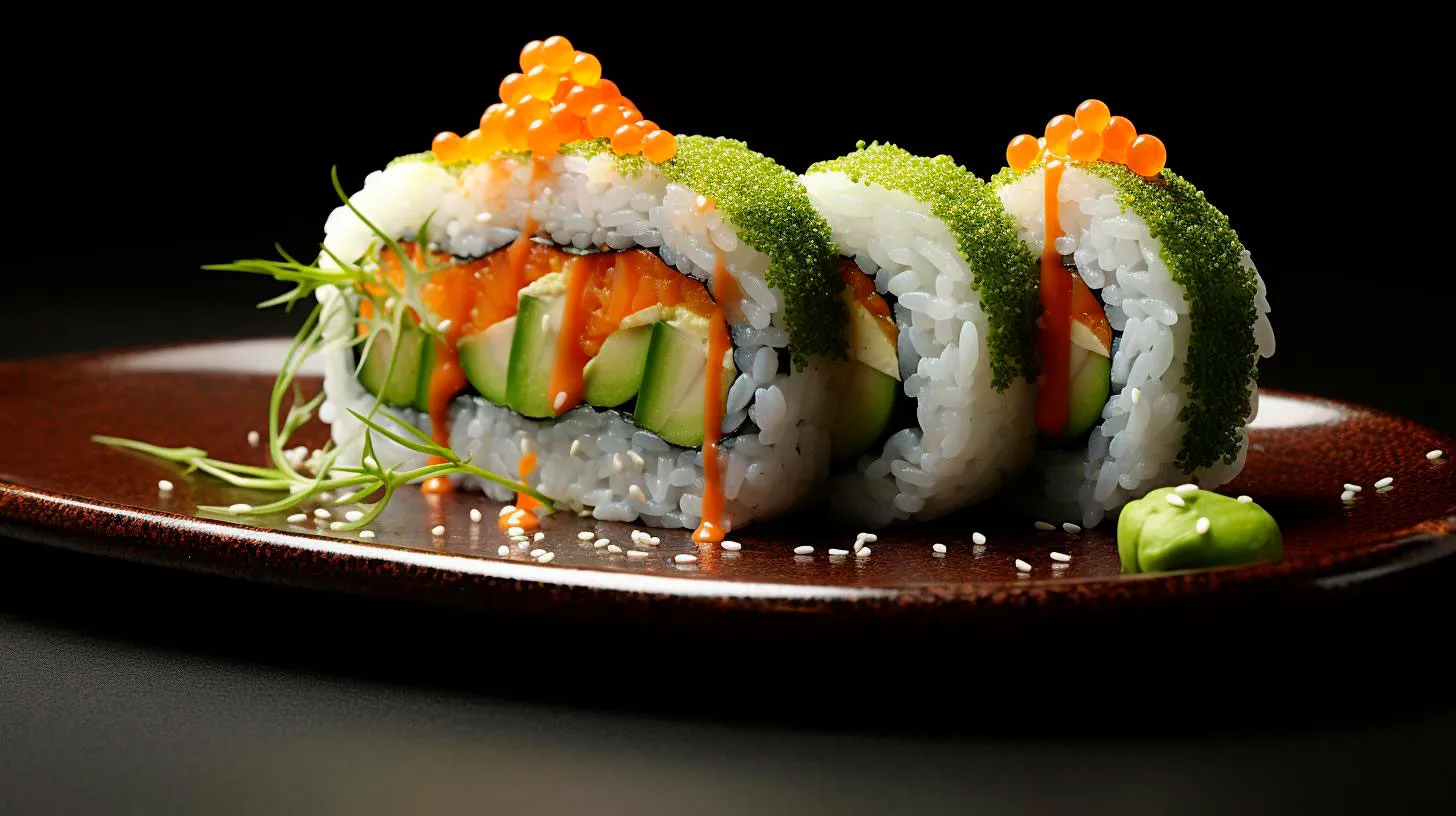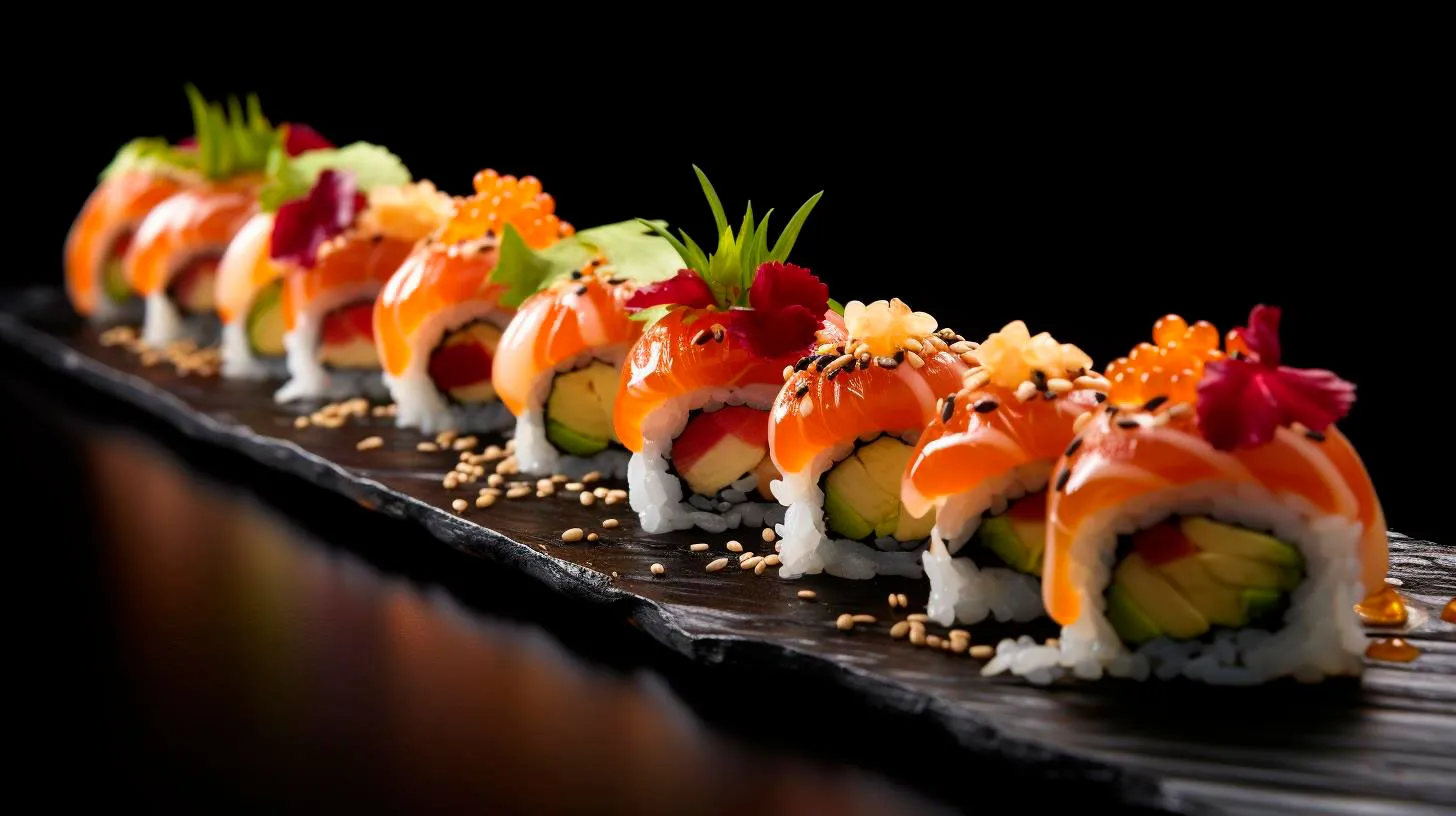Enhancing the Lifespan of Your Sushi Knife Collection
Invest in Quality Knives
One of the first and most crucial steps towards enhancing the lifespan of your sushi knife collection is investing in knives crafted from high-quality materials. While there are many affordable options available, it’s advisable to opt for knives made of high-carbon stainless steel or Damascus steel for superior durability.
Key Takeaway: Quality knives made of high-carbon stainless steel or Damascus steel are worth the investment as they provide outstanding durability.
Proper Knife Storage
Knife storage is often overlooked, but it plays a significant role in maintaining the sharpness and lifespan of your sushi knives. Leaving your knives lying around in a drawer or cabinet can lead to dulling, nicks, or even injuries. To avoid such mishaps, consider these storage options:
- Knife Blocks: A knife block with individual slots for each knife blade provides the best protection, keeping them safely stored and preventing damage from contact with other utensils.
- Magnetic Knife Strips: Installing a magnetic strip on your kitchen wall not only adds a sleek look to the space but also keeps your knives easily accessible while eliminating the risk of damage from contact.
- Knife Rolls or Sheaths: If you often travel with your knives or require compact storage, invest in a knife roll or sheath to protect your blades from impact and ensure safe transportation.
Key Takeaway: Proper knife storage options, such as knife blocks, magnetic strips, or knife rolls/sheaths, keep your knives safely stored, preventing damage and ensuring easy access.
Regular Honing and Sharpening
Honing and sharpening are essential maintenance practices to keep your sushi knives in top condition. Honing, often mistaken for sharpening, is the process of realigning the blade’s edge. Sharpening, on the other hand, involves removing material to create a new, sharp edge.
Here are a few key points to keep in mind:
- Honing should be done regularly, preferably before each use, to maintain the knife’s sharpness. Use a honing rod or a honing stone to gently realign the blade’s edge.
- Sharpening should be done when honing no longer restores the desired sharpness. It is recommended to seek professional sharpening services or learn proper sharpening techniques to avoid damaging the blade.
Key Takeaway: Regular honing and occasional sharpening are crucial for maintaining the sharpness and overall performance of your sushi knives. Seek professional help or learn the proper techniques for sharpening your knives.
Handwashing and Drying
Proper cleaning and drying of your sushi knives play a significant role in preventing rust, discoloration, and overall deterioration of the blade. Following these steps can help preserve the quality of your knives:
- Handwashing: Always handwash your knives with mild dish soap and warm water. Avoid soaking them for an extended period as it can cause damage to the handle and the blade.
- Drying: After washing, dry your knives immediately with a soft cloth to prevent moisture buildup and potential rusting. Avoid air-drying as it may lead to water spots.
- Storage: Once dry, store your knives in the appropriate storage option to prevent contact with moisture and further protect their quality.
Key Takeaway: Handwash your knives with mild dish soap, dry them immediately, and store them properly to prevent rust and deterioration.
Avoid Misuse and Accidental Damage
To ensure the longevity of your sushi knives, it’s important to avoid misusing them and protect them from accidental damage. Consider the following precautions:
- Avoid cutting through bones or frozen ingredients as it can damage the edge and break the blade.
- Don’t use your sushi knives for other purposes besides sushi preparation, as this can result in premature wear.
- Always use a cutting board made of soft materials, such as wood or plastic, to prevent unnecessary strain on the blade.
Key Takeaway: Proper handling and avoiding misuse are essential to prevent accidental damage and extend the lifespan of your sushi knives.
By following these tips, you can maintain the sharpness and quality of your sushi knife collection, ensuring you enjoy the art of sushi-making for many years. Remember, investing in high-quality knives, proper storage, regular honing, handwashing, and avoiding misuse are key to enhancing the lifespan of your cherished sushi knives.
Proper Cleaning and Maintenance for Sushi Knives
These specialized knives are designed to slice through delicate fish and create thin, precise cuts. To ensure the longevity and performance of your sushi knives, it is important to follow specific cleaning and maintenance practices.
The Importance of Proper Cleaning and Maintenance
Before we delve into the cleaning and maintenance techniques, let’s take a moment to understand why it is so crucial to follow these practices:
- Prolongs the lifespan of the knife: Proper cleaning and maintenance helps to prevent rust and corrosion, which can degrade the blade over time.
- Ensures optimal performance: Regular cleaning removes residual food particles and debris, allowing the knife to retain its sharpness and cutting precision.
- Enhances food safety: Thoroughly cleaning your sushi knives helps to eliminate bacteria and other harmful contaminants, guaranteeing the safety of the food you prepare.
Cleaning Your Sushi Knife
Now that we understand the importance of cleaning and maintenance, let’s explore the step-by-step process of cleaning your sushi knife:
Step 1: Rinse the Knife Immediately
After each use, rinse your sushi knife under warm water to remove any leftover food particles. Avoid using abrasive sponges or brushes, as they may damage the blade’s sharp edge.
Step 2: Use Mild Soap or Detergent
Apply a small amount of mild soap or dish detergent to a soft sponge or cloth. Gently scrub the blade to remove any remaining residue. Be cautious not to apply excessive pressure or scrub too harshly, as this can cause scratches.
Step 3: Dry Thoroughly
After washing, thoroughly dry your sushi knife with a clean, dry cloth. Ensure that no moisture remains on the blade to prevent rust and corrosion.
Step 4: Store in a Safe Place
Once dry, store your sushi knife in a safe and appropriate location. Ideally, use a knife block or a sheath to protect the sharp edge and prevent any accidental injuries.
Maintaining Your Sushi Knife
Regular maintenance will help preserve the quality and performance of your sushi knife. Here are some key points to keep in mind:
Honing the Blade
To maintain the sharpness of your knife, consider using a honing rod. Gently slide the blade along the rod at a 15-degree angle, repeating the process several times for each side. This technique realigns the edge and helps it stay sharp.
Avoid Cutting Frozen or Hard Foods
Refrain from using your sushi knife to slice through frozen or hard foods. The delicate structure of sushi knives is best suited for cutting soft ingredients like fish and vegetables. Cutting frozen or hard foods can damage the blade’s edge and reduce its cutting performance.
Regular Sharpening
To maintain the exceptional cutting performance of your sushi knife, periodic sharpening is necessary. You can either take your knife to a professional sharpener or learn to sharpen it yourself using sharpening stones. An adequately sharpened sushi knife ensures precise and effortless cuts.
Handle with Care
Finally, as with any kitchen tool, it is essential to handle your sushi knife with care. Avoid hitting it against hard surfaces or using it to pry open cans or packages. If used improperly, the blade can become damaged or chipped.
By following these cleaning and maintenance techniques, you’ll be able to enjoy the exceptional performance and longevity of your sushi knife for years to come.
Key Takeaways:
- Proper cleaning and maintenance prolong the lifespan of sushi knives.
- Regular cleaning ensures optimal performance and enhances food safety.
- Rinse the knife immediately after use under warm water.
- Use mild soap or detergent to remove residue.
- Dry the knife thoroughly to prevent rust and corrosion.
- Store the knife in a safe place when not in use.
- Hone the blade regularly to maintain sharpness.
- Avoid cutting frozen or hard foods.
- Periodically sharpen the knife to maintain cutting performance.
- Handle the sushi knife with care to prevent damage.
Remember, proper cleaning and maintenance not only extend the life of your sushi knife but also ensure a safe and enjoyable sushi-making experience.
Choosing the Right Knife for Different Types of Sushi
The Art of Sushi-Making
Sushi-making is considered an art form that demands precision and skill. To create visually appealing and perfectly sliced pieces of sushi, it is crucial to have the right tools, especially the perfect knife. While regular kitchen knives may work for some types of sushi, traditional Japanese sushi knives are purpose-built to bring out the best in each variation. Here are the key types of sushi knives:
- Deba Knife: Primarily used for cutting fish, the Deba knife features a thick, sturdy blade that can handle larger ingredients. Its single-edged blade offers precision and control while filleting fish for sashimi.
- Yanagiba Knife: The Yanagiba knife, also known as a sashimi knife, is designed for slicing raw fish into thin, elegant pieces. With a long, narrow blade, this knife allows for clean cuts with minimal effort.
- Usuba Knife: The Usuba knife, commonly used in sushi preparation, has a thin, rectangular blade perfect for slicing through vegetables with precision. It helps chefs create beautiful garnishes and decorative cuts for sushi rolls.
- Takobiki Knife: The Takobiki knife, featuring a long, thin blade, is specifically designed for slicing octopus and other delicate seafood. Its thin edge reduces tearing, resulting in smooth and even slices.
Why Use Specialized Sushi Knives?
Specialized sushi knives offer several advantages that regular kitchen knives may lack. Here are a few key reasons why using the right knife is crucial when preparing sushi:
- Precision: Sushi knives are designed to provide precise cuts, ensuring the flavors and textures of the ingredients are preserved.
- Control: The unique blade designs of sushi knives offer excellent control over cutting, allowing chefs to achieve consistent thickness and shapes.
- Efficiency: The sharpness and balance of sushi knives make slicing through delicate ingredients effortless and efficient, saving valuable time in the kitchen.
- Presentation: Sushi is not only about taste but also visual appeal. Specialized knives enable chefs to create visually stunning displays of sushi, enhancing the overall dining experience.
Key Takeaways
Choosing the right knife for different types of sushi is essential for achieving the perfect slice. Here are the key takeaways to remember:
- Using specialized sushi knives enhances precision and control in sushi-making.
- The Deba knife is ideal for cutting fish, while the Yanagiba knife is perfect for slicing raw fish.
- The Usuba knife is designed for slicing vegetables, enabling chefs to create decorative cuts and garnishes.
- The Takobiki knife ensures clean and even slices of delicate seafood like octopus.
- Sushi knives provide efficiency, saving time in the kitchen, and enhancing the overall presentation of sushi.
Mastering the art of sushi-making requires not only skill but also the right tools. Investing in specialized sushi knives will elevate your sushi-making game and allow you to create visually stunning and delicious sushi dishes. So, the next time you’re preparing your favorite sushi, make sure you have the appropriate knife on hand to enhance your sushi-making experience!
Storage Solutions to Keep Your Sushi Knives Safe
In this article, we will explore some storage options that will help you organize and care for your precious sushi knives.
Benefits of Proper Knife Storage
Before we dive into the storage solutions, let’s take a moment to understand the importance of proper knife storage for sushi knives:
- Ensures Safety: Proper storage protects you and others from accidental cuts or injuries.
- Preserves Sharpness: Keeping your knives in the right storage solution helps retain their sharpness, preventing the need for frequent honing or sharpening.
- Enhances Durability: Storing your knives correctly prevents them from banging against other utensils or hard surfaces, thus extending their lifespan.
- Organizes Your Kitchen: Efficient storage solutions keep your kitchen tidy, making it easier to find the right knife when needed.
Storage Solutions for Sushi Knives
1. Knife Blocks
Knife blocks are a popular and classic storage option for sushi knives. These blocks come in various designs, materials, and sizes to accommodate different blade lengths and handle styles. Some key advantages of using knife blocks include:
- Keeps knives within reach while offering adequate protection.
- Allows easy identification of knives for quick access.
- Safeguards the blades from accidental damage.
- Enhances the aesthetics of your kitchen countertop.
2. Magnetic Strips
A modern and space-saving storage solution, magnetic strips are an excellent choice for sushi knives. These strips have strong magnets that securely hold the knives in place while showcasing their sleek design. Here are some benefits of using magnetic strips:
- Allows you to display your collection, adding a decorative touch to your kitchen.
- Saves valuable countertop space by keeping knives off the surface.
- Easy to clean and maintain.
- Keeps knives visible, reducing the risk of accidents when reaching for the right one.
3. Knife Rolls or Bags
For sushi chefs who are frequently on the move or for those who prefer compact storage, knife rolls or bags are an ideal option. These rolls or bags typically have individual slots for each knife, providing maximum protection and portability. Here are some reasons to consider knife rolls or bags:
- Perfect for professional chefs or enthusiasts who need to transport knives safely.
- Organizes and protects each knife individually.
- Compact and easy to store when not in use.
- Some rolls or bags offer additional compartments for storing other kitchen tools.
Key Takeaways
When it comes to storing sushi knives, it’s essential to choose a solution that suits your needs and preferences. Here are some key takeaways to remember:
- Proper knife storage enhances safety, sharpness, and durability.
- Knife blocks offer classic protection and organization.
- Magnetic strips save space and showcase your knives.
- Knife rolls or bags provide portability and individual protection.
Investing in a reliable storage solution not only takes care of your precious sushi knives but also preserves their quality for years to come. Choose the option that best suits your style and kitchen setup, and enjoy the benefits of having your knives organized, accessible, and safe.



